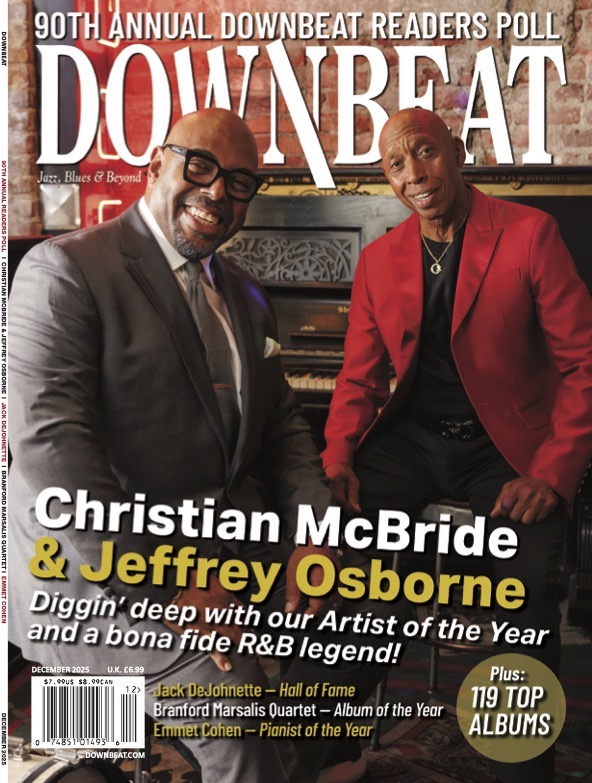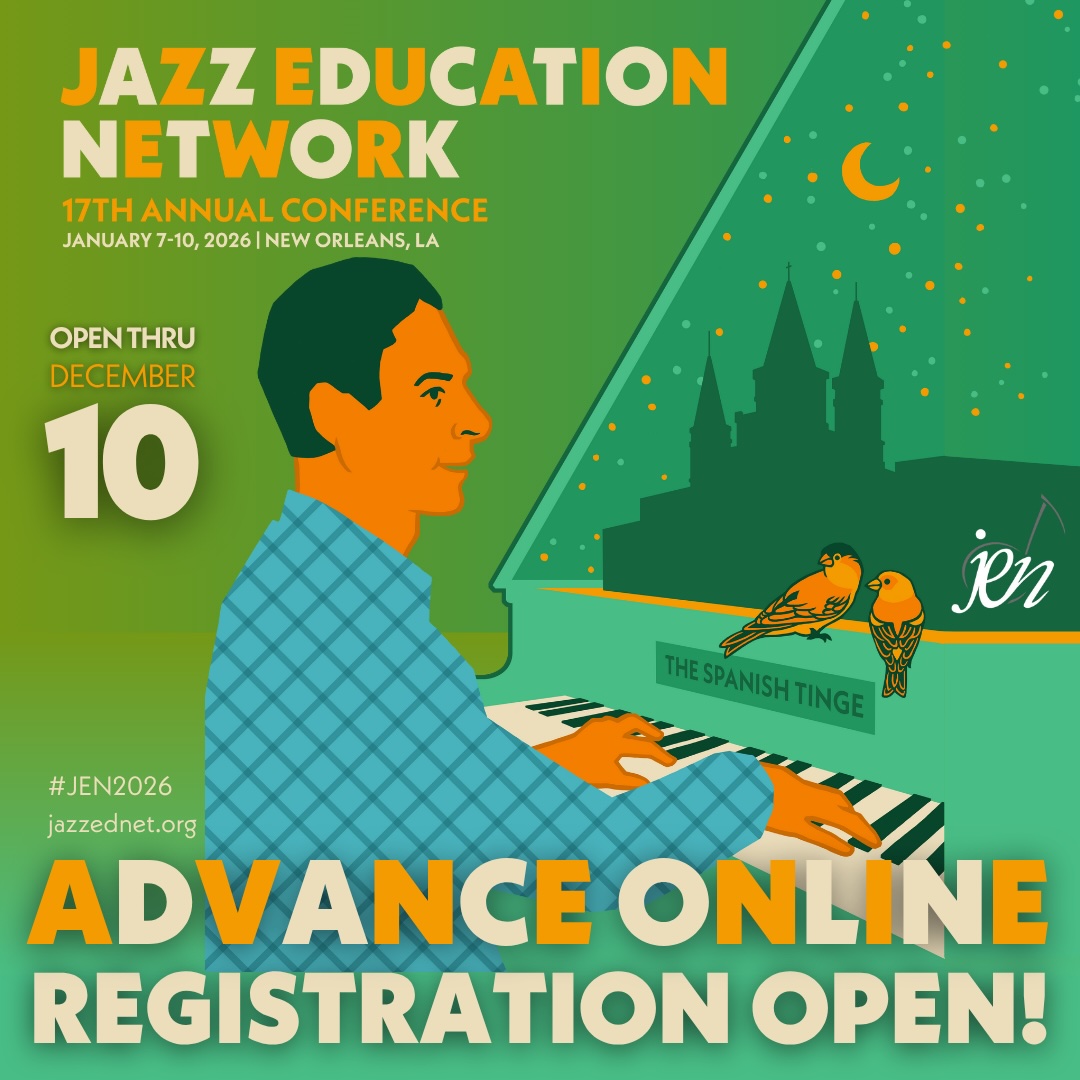Oct 28, 2025 10:47 AM
In Memoriam: Jack DeJohnette, 1942–2025
Jack DeJohnette, a bold and resourceful drummer and NEA Jazz Master who forged a unique vocabulary on the kit over his…
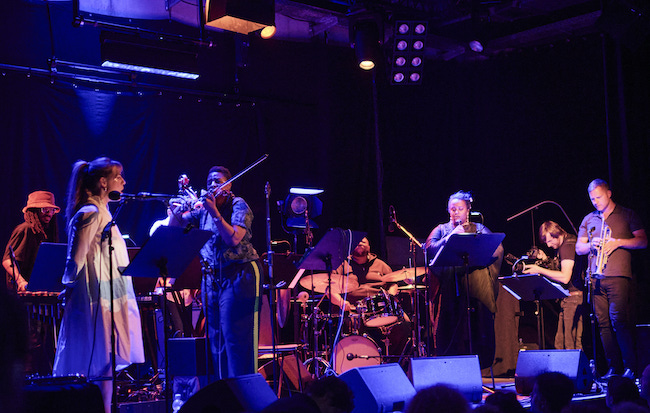
Trumpeter-composer Peter Evans’ two-part epic for his band Being & Becoming (with vibist Joel Ross, bassist Nick Jozwick and Tyshawn Sorey) and “Voices” (featuring Sofia Jernberg, Mazz Swift and Alice Teyssler) dazzled listeners at this year’s Monheim Triennale.
(Photo: Studio Pramudiya NPI)Jazz cruises have become an expanding phenom in recent years. In a fittingly radical twist on that tradition, one of the fresher items on the international festival scene is the Monheim Triennale, a kind of anti-cruise festival. The maverick-spirited festival, which finished up the second climax of its three-year cycle in Germany this month, largely takes place on the docked MS RheinFantasie ship in this small riverfront city between Dusseldorf and Cologne, Germany, with side trips to small church spaces and a new venue, the Sojus 7.
On board and around town, experimental, improvisational and otherwise left-of-mainstream music shakes up the ship for four busy July days. Launched by seasoned festival director Reiner Michalke, at the invitation of and in collaboration with the progressive Monheim Mayor Daniel Zimmermann, the Triennale is a bold new example of a design existing outside the usual jazz or new music festival box. It takes advantage of its compact and picturesque host city, with concerts and improvisational meet-ups and interactive community programs.
In an introductory session on the boat’s bow, Michalke, whose resume includes a long stint as director of Cologne’s famed Stadtgarten venue and director of the Moers festival, explained the origin story of the festival. “We didn’t want to make a general festival, but something unique,” he noted. “We don’t want to focus on particular styles, and to bring people here from all over the world.”
Jazz is an abiding component in the festival’s programming agenda, as heard through the presence of commanding trumpeter-composer Peter Evans (the star of this show), saxophonist Darius Jones, guest drummer Tyshawn Sorey and conceptualist-keyboardist Heiner Goebbels. But genre is a flexible and changeable factor.
Other artists on the official roster fall between the cracks of jazz, new music and other fixed categories. The list of musicians included the fascinating Gaelic small pipe player Brighde Chaimbeul, inspired Palestinian electronic musician Muquata’a, trombonist/vocalist Shannon Barnett, trombonist-vibist-wild woman Selendis S.A. Johnson and versatilely voiced-and-minded vocalist Julia Ulehla. Subtle powerhouse German drummer Ludwig Wandinger punched up the open-eared rock energy, and dynamo Javan vocalist Peni Candra Rini was duly and exotically rapturous.
Chameleonic multi-instrumentalist Shahzahd Ismaily, an avid team player, served as a resident booster and spiritual guidance counselor for the festival. In the in-house publication Monheim Paper II, Ismaily observed that the festival “resets your thinking to artmaking for the process itself.”
Those of us at last year’s edition, “The Prequel,” got a wider perspective on the project and a hearty introduction to the members of the team. Whereas 2024’s “The Prequel” featured an almost entirely improvised program, in multiple partnering arrangements, this year’s substance came in the form of each musician’s “Signature Piece,” some more substantial and highly evolved than others.
For a fine primer on the Triennale, proceed to the new feature-length documentary Every Note You Play, an impressive effort directed by Mika Kaurismaki (part of the famed Finnish cinema brother team, alongside sibling Aki), now in theaters and making film festival rounds. Heads up: Much more than an in-house company promotional effort, this is a music documentary worth savoring for its many merits. Among its telling sound bites is the core notion, uttered by Mayor Zimmerman, that “culture is nutrition.”
Apart from the larger concerts, some of the Triennale’s enticing musical events occur in the stripped-down form of half-hour solo sets in the small Marienkapelle church, on the avenue along the Rhine. Last year, the standout solo set came from the ambi-talented and technically dazzling Evans, on standard B-flat and piccolo trumpets. This year, the series opened auspiciously and artfully with Mats Gustafson’s set on flute and his go-to instrument, the bari sax, ranging from calm intensity to sheerer intensity, with elephantine multiphonics and circular breathing in the measured mix.
A “discovery” moment happened next, with young upright bassist Henry Fraser. His meditative arco solo etude featured steadily droning low tones and ghostly harmonic gestures on top, amounting to an alluring abstract tone poem. Virtuosic vocalist Sofia Jernberg later deconstructed song forms with her inimitable Cubist panache, in contrast to the meditative and hypnotic chemistry between Chaimbeul and Ulehla, who worked the room’s acoustics with maximum mystique. Joel Ross’ vibraphone solo covered a broad waterfront of gospel, minimalist tone-tolling, Milt Jackson-like elegance and avant-detours.
The duet-scaled Best in Fest award goes to the alternately lyrical and energized meeting of saxophonist-deserving-wider-recognition Jones and drummer Sorey, showing the extreme range of their powers and poetic instincts. The duet unreeled before a packed house on the Boat’s Bow, with the Rhine’s dreamy scenery providing a third sensual element to the affair.
On a larger scale, each artist’s signature piece occupied distinctive corners of the expressive, idiomatic and conceptual spectrum. Johnson’s debuted his game but sometimes unfocused Reflections On The German Revolution (1918–1919, and more), a little-big-band setting with parsimonious sections of tautly scored material giving way to improvisational dance moves and the leader’s antic “conduction” guidance.
Barnett, whose striking version of the standard “I’m Glad There Is You” was one of last year’s only dips into pre-existing music, avoided the trombone with her lovely and sophisticated singer-songwriter project How Much Is The Moon? Piano, voice and chamber orchestra filled the bill, with grace to spare.
Distinctive texture-making electric guitarist Oren Ambarchi, from Berlin by way of Australia, plunged headlong into the machinistic groove-making of Hubris, recasting his well-received 2016 piece. Amidst the thunderous mesh and pummeling beat, Gustafson and bass clarinetist Sam Dunscombe wailed into the enveloping sound wall. Suddenly, in a wink of self-effacing humor, a woman approached the mic and halted the proceedings with the exclamation “stop!” (recalling David Bowie’s hollering “shut up!” during Robert Fripp’s howling solo on “It’s No Game”).
Amarchi’s sonic palette often slips into the realm of organ-like textures. Georgian-born keyboardist Anushka Chkheidze’s Intricate Pipes found her using a digital interface to run her electronics through the pipes of the Altstadtkirche’s organ, a fascinating new-old marriage, on ambient and film music-y turf.
To these ears, the signature highlights came courtesy of Goebbels and Evans. Goebbels, whose new sense of theater and conceptualism combines with his innately experimental yet lyrical piano approach, led The Mayfield, a tribute to an industrial space in Manchester where he rehearsed for his 2018 project Everything That Happened And Would Happen. For this peripheral after-echo of that epic, Goebbels and company — including the ethereal proto-synthesizer, the Ondes Martenot, played by Cecile Lartigau — conjured up an engrossing, edgily impressionistic sound tapestry. We could sense and feel the industrial space of its nostalgic focus.
Most ambitiously, we were bedazzled by Evans’ two-part epic for his band Being & Becoming (with vibist Ross, bassist Nick Jozwick and new drummer, reckoning force Sorey) and “Voices” (featuring Jernberg, Mazz Swift and Alice Teyssler). The sum effect deserves a rich afterlife beyond Monheim, with its ideal flowing blend of structure and free-zoned asides, touching on Evans’ natural straddling of jazz, new music and early music impulses. For this occasion, Evans the composer and bandleader took precedence over Evans the mind-blowing soloist and seeker, but he had his bright moments in the spotlight, as in a power-tooled duet with Sorey.
The new opus was the realization of a comment Evans made in the Kaurismaki documentary about his desire to create music made up of “super fixed things and then oceans of not knowing what happens next.”
On closing night, Muqata’s electronic and live video piece False Vectors (with mesmerizing, morphing visuals by Fairouz Hasan) created an expressive world unto itself, at once abstract and evolving, but also sneaking in reality checks with its discreet but clear references to the ongoing inhumane catastrophe in Gaza.
The Monheim Triennale might qualify, at least in part, as an escapist zone for a long weekend, but the troubled outside world finds its way onto the boat and into our awareness. DB
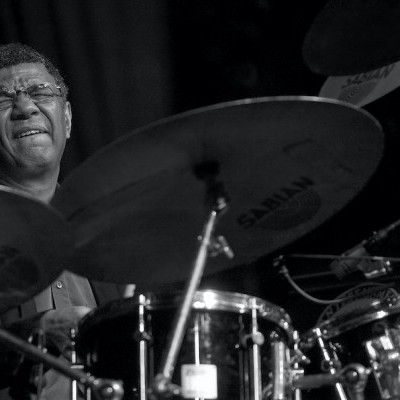
Jack DeJohnette boasted a musical resume that was as long as it was fearsome.
Oct 28, 2025 10:47 AM
Jack DeJohnette, a bold and resourceful drummer and NEA Jazz Master who forged a unique vocabulary on the kit over his…
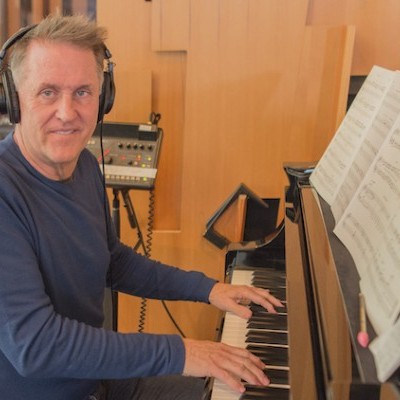
Goodwin was one of the most acclaimed, successful and influential jazz musicians of his generation.
Dec 9, 2025 12:28 PM
Gordon Goodwin, an award-winning saxophonist, pianist, bandleader, composer and arranger, died Dec. 8 in Los Angeles.…
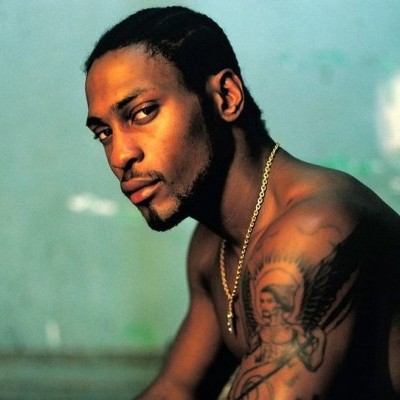
D’Angelo achieved commercial and critical success experimenting with a fusion of jazz, funk, soul, R&B and hip-hop.
Oct 14, 2025 1:47 PM
D’Angelo, a Grammy-winning R&B and neo-soul singer, guitarist and pianist who exerted a profound influence on 21st…
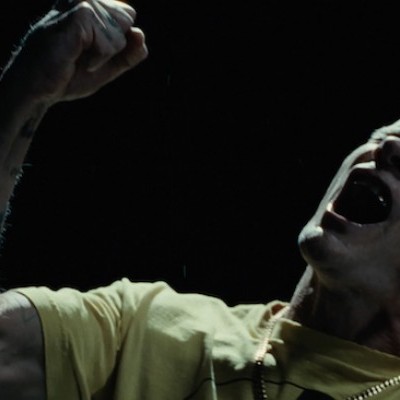
Flea has returned to his first instrument — the trumpet — and assembled a dream band of jazz musicians to record a new album.
Dec 2, 2025 2:01 AM
After a nearly five-decade career as one of his generation’s defining rock bassists, Flea has returned to his first…
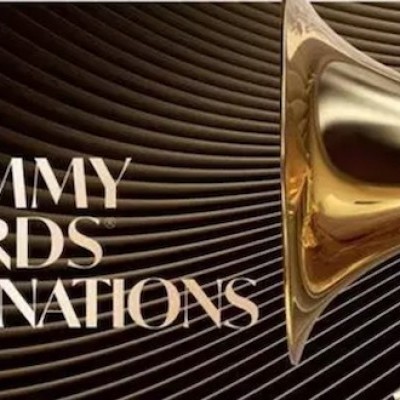
To see the complete list of nominations for the 2026 Grammy Awards, go to grammy.com.
Nov 11, 2025 12:35 PM
The nominations for the 2026 Grammy Awards are in, with plenty to smile about for the worlds of jazz, blues and beyond.…

